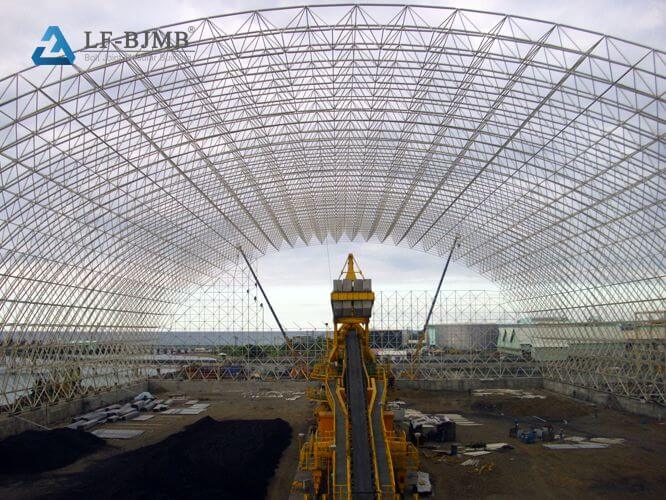+86 177 5193 6871
222, Block B, Diamond International, Guozhuang Road, Xuzhou, Jiangsu, China
With the rapid development of economy and technology, space steel structures are characterized by complex forces, diverse structural forms, and large spans, and their design theory and construction technology need to be further studied. People put forward higher requirements for building functions and building appearance. For this reason, many long-span spatial structures with large spans, multiple types of rods and complex forces have emerged, and the corresponding structural forces will be more complicated.
There are many naturally formed space structures in nature, such as spider webs, soap bubbles, conch shells, etc. Inspired by nature, human beings use bionic principles to innovate and develop spatial structures, and create large-span spatial structures such as cable-net structures, membrane structures, and reticulated shell structures. At the same time, the rapid development of computer technology has released the shackles of the computational research of the space structure system, and promoted the integration of the safety and aesthetics of the space structure system. Long-span space structures often adopt steel structure systems, which greatly increases the demand for steel structures in the construction market. The main reason is that steel is lighter in weight and higher in strength than concrete, and can meet the high requirements for material properties of long-span and super high-rise structures. Therefore, steel structures are widely used in large-span spatial structures of various shapes, and give full play to the performance advantages of light weight and high strength of steel. Due to the complexity of the structure of the space steel structure, the effective control of construction has become a difficulty in the formation of the structure.

At present, there are various forms of large-span space steel structures, and the stress mechanism is complex. The common construction methods can be roughly divided into hoisting method, overall lifting method, and sliding method. The high-altitude bulk construction of large and complex steel structures is a process of transition from loose parts to quasi-structures and then to complete structural systems, which involves changes in boundary conditions, changes in force transmission mechanisms, changes in the rigidity of incomplete structures, and high-altitude bulk construction. Error accumulation and many other aspects. As one of the commonly used construction methods for complex steel structures, the high-altitude loose assembly method will greatly increase the difficulty of high-altitude operations when there are high-altitude assembly of special-shaped steel columns, extra-long beams, and curved long beams in the structure. Large-section steel columns range from a few tons to tens of tons. Due to the limitation of the construction site, the steel columns must be hoisted in sections and spliced at high altitude. In the high-altitude splicing, how to realize the precise positioning, precise adjustment and high-altitude welding of the column, this series of technical problems will directly affect the construction safety. Therefore, it can be considered to assemble the steel components into small splicing units on the ground, and then hoist them to the high altitude for splicing, which greatly reduces the amount of high-altitude operations and shortens the construction period. In the process of high-altitude splicing, it is necessary to design a reasonable assembly platform in combination with the shape of the main structure, and a reasonable temporary support scheme to ensure construction safety. There are various forms of temporary support for space structures, and the selection of temporary supports needs to consider the main structural system, construction economy, construction safety, and the conditions of the construction site. After the hoisting construction of the main structure is completed, the temporary support structure needs to be removed. After the temporary support is removed, all loads will gradually be transformed into the main structure, and the internal force redistribution of the structural system will occur. Therefore, it is necessary to carry out numerical calculation and analysis on the bracing process, select a reasonable sequence of bracing, prevent local deformation of the main structure and excessive local stress due to bracing, and ensure construction safety.
